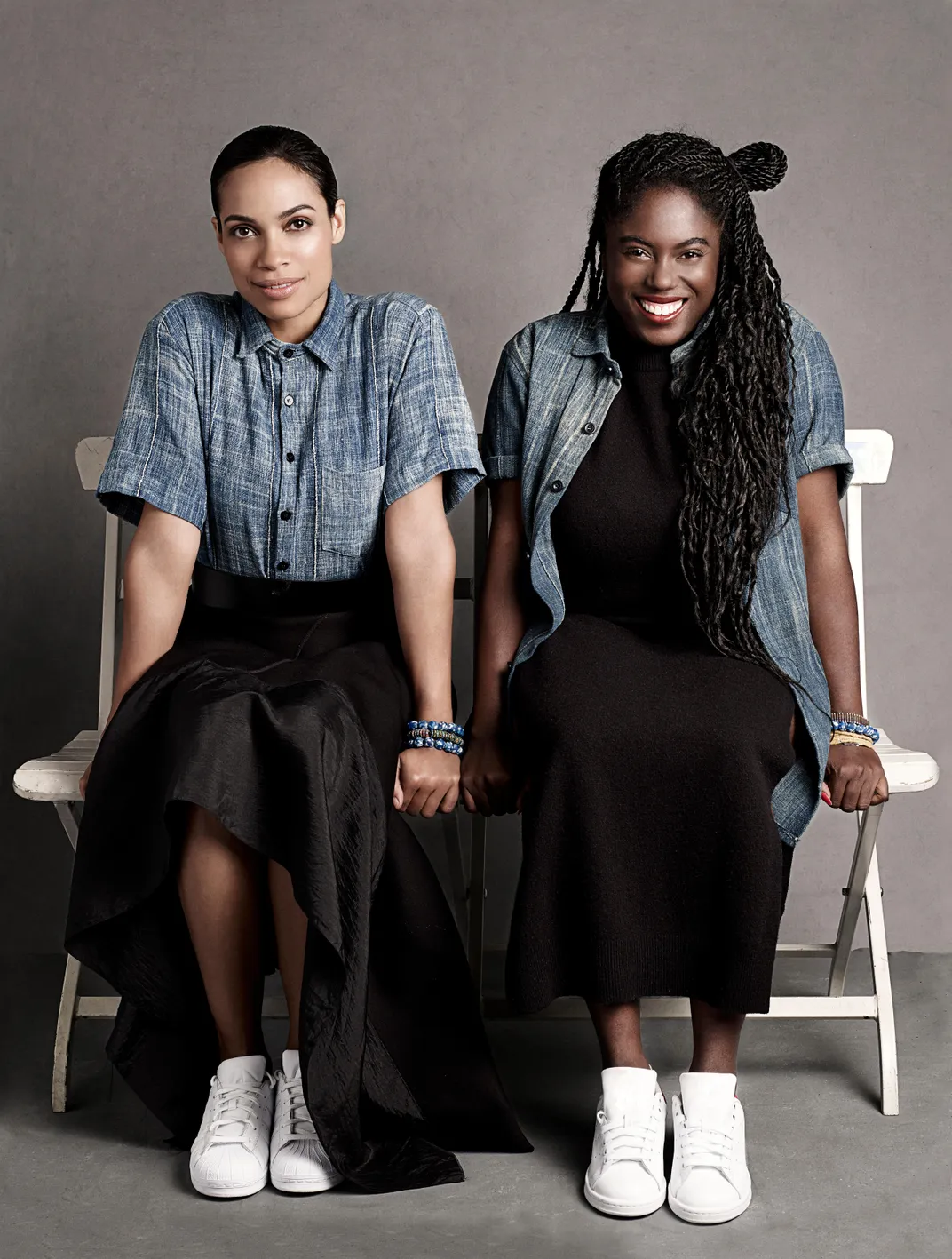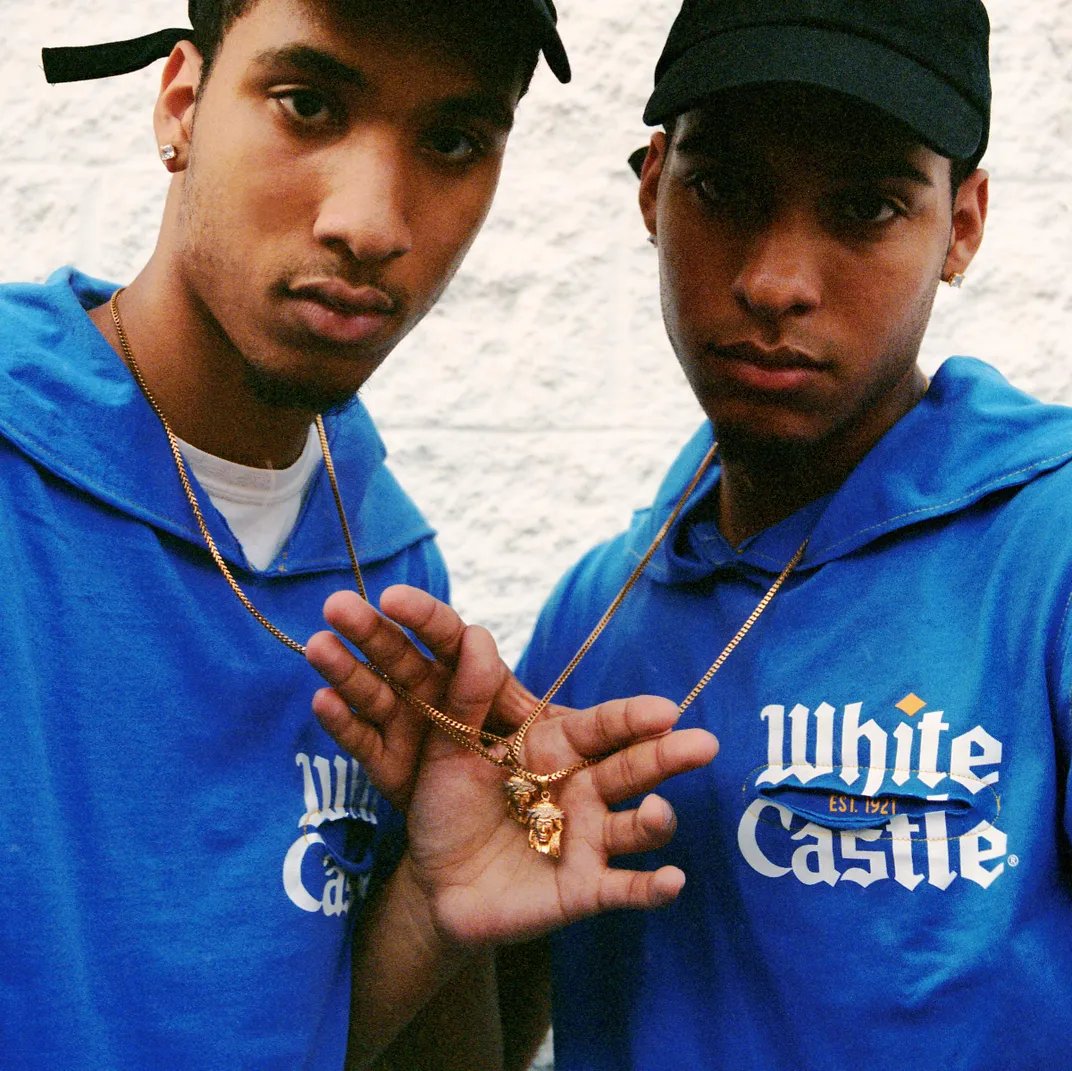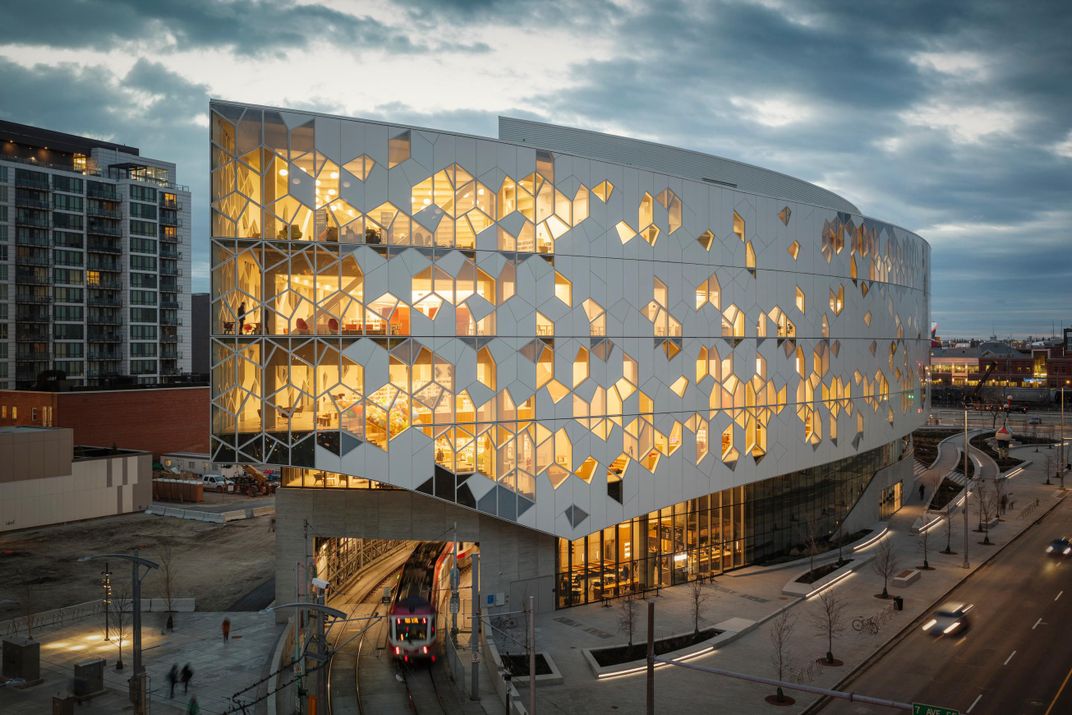Top Designers Strut Their Stuff at Cooper Hewitt Gala
Kickstarter, Gowanus Canal Sponge Park, TELFAR and others take home awards
/https://tf-cmsv2-smithsonianmag-media.s3.amazonaws.com/filer/eb/05/eb057dcd-0bba-4d27-9776-ae47957826fa/designio02_connectedworlds.jpg)
As the Cooper Hewitt, Smithsonian Design Museum’s 21st National Design Awards gala kicked off Thursday evening, host Bobby Berk told a story about his own introduction to design, which paved the way for his eventual fame on “Queer Eye” and beyond. He recalled visiting a Target store, where he observed the results of the iconic collaboration between the retailer and architect Michael Graves: ordinary, affordable household projects designed to delight their users.
“Right then and there I thought to myself, I want to have a part of that,” he told the event's audience last night. “I want to work in design and make people’s lives better through design.”
The impact of design on ordinary lives and the world around us was everywhere at the annual gala, which moved to an online format this year. In place of cocktails and fancy dresses, virtual attendees watched short films showcasing the work of the award winners.

Accepting the National Design Award for Design Visionary on behalf of crowdfunding platform Kickstarter, CEO Aziz Hasan spoke directly to all the creators thinking about launching a new venture but wondering whether—especially at this moment—it was possible.
“I want to tell each of you, you should definitely take a shot,” he said. “These ideas are what society thrives on.”
Since its start in 2009, Kickstarter has helped hundreds of thousands of new ideas get off the ground. The platform allows anyone to seek support for their project directly from the public rather than from banks or venture funds. More than 18 million people have paid over $5 billion to support innovative products, businesses and other projects through the site. In 2015, Kickstarter became a Public Benefit Corporation, reflecting its prioritization of its mission over profits. The Smithsonian Institution has used the platform to raise funds for the conservation of a number of important artifacts, including the Ruby Slippers that Judy Garland wore in the 1939 film The Wizard of Oz and Neil Armstrong's spacesuit.
Taking home the Climate Action Award was Sponge Park, designed by DLANDstudio. The park at Gowanus Canal in Brooklyn allows visitors to walk, skateboard or sit by the water and enjoy the sight of growing plants—which are quietly cleaning up filthy industrial and human waste. Sponge Park represents a new way to clean urban stormwater runoff, using plants and microorganisms in soil to absorb and break up pollution from both petroleum byproducts and sewage. The park represents a model for multifunctional environmental projects in urban areas around the country.
“It’s a landscape, it’s a park, it’s a planter, it’s a piece of public infrastructure, it’s a lot of things,” Susannah Drake, principal at DLANDstudio said, accepting the award. “The problem seemed somewhat sort of scientific or almost utilitarian on the surface . . . but then it turned into something else.”

Accepting the Emerging Designer award for Studio One Eight Nine, founders Abrima Erwiah and Rosario Dawson described being inspired by meeting woman creators from the Congo. They recalled questioning why a “made in Italy” label makes a product desirable, but not an origin in African nations with their own deep artisanal traditions. Since 2013, they have built their company into an international luxury lifestyle brand that operates in New York and Ghana. It partners with African artisans and supports community-led projects in both the U.S. and Africa.
Erwiah recalled seeing the way African designers use indigo and thinking about the way the plant dye was historically connected with the slave trade.
“It’s very powerful, kind of taking back indigo and putting it in our supply chain,” she said.
Cooper Hewitt’s Architecture award went to Snøhetta, the firm behind some of the most well-known projects in the world, from the National September 11 Memorial Museum Pavilion to the Norwegian National Opera. Cofounder Craig Dykers described the firm’s approach to design as a kind of collaboration between designers and the people who enter the spaces they help create. He said the goal is “buildings that are a canvass for other people to project their feelings on.”
“Design is not a luxury but rather an essential component needed for all of society to thrive,” added Snøhetta partner Elaine Molinar.

Jim Burnett, founder of Landscape Architecture award winner OJB Landscape Architecture, offered a similar perspective on his firm’s work, which helps make public spaces where human and ecological communities come together. He described design as a tool for tackling some of the enormous challenges of the current moment.
“We can create environments that inspire people to change their perspective,” he said.
OJB’s projects include Klyde Warren Park in Dallas, Texas, Myriad Botanical Gardens in Oklahoma City, Oklahoma and Hall Wines in St. Helena, California.
The award for Fashion Design went to TELFAR, the creation of Telfar Clemens, a Liberian-American designer from Queens whose vegan leather shopping bags have become a sensation. TELFAR has been creating unisex fashion since 2004. It has used the proceeds of some of its collections to bail out kids held at Rikers Island. The brand has moved in unexpected directions, including designing uniforms for the fast food company White Castle. Clemens described his own experience as a queer teenager unable to buy the kinds of clothing that suited his tastes.
“I started making clothes basically because I couldn’t find the ones I wanted to wear in stores, and the ones I could find in stores I wasn’t allowed to buy,” he said. “I began making my own clothes at the age of 15.”

Scott Dadich, founder and co-CEO of Godfrey Dadich Partners, took home the Communications Design award. The firm helps produce everything from documentary films to brand marketing campaigns. It has worked with numerous clients known for impeccable aesthetics, including Nike, Apple and National Geographic. Dadich was previously editor in chief of WIRED.
The Digital Design award went to Design I/O, led by partners Emily Gobeille and Theodore Watson with Nicholas Hardeman and Anna Cataldo. The firm has developed playful, interactive experiences for the Cleveland Museum of Art, Nokia Bell Labs, Franklin Park Conservatory and many others.
The National Design Award for Product Design went to Catapult Design, a nonprofit consultancy that helps create market-based solutions for food security, water and sanitation, mobility and other human needs. Based in Denver, Colorado, the company operates in 14 countries with clients that include the Bill & Melinda Gates Foundation, the World Bank, Peace Corps and the National Endowment of the Arts.
While gala attendees missed the chance to spend the evening together in person, one upside to the virtual format was that people were able to join the event from all over the world.
“I’ve always said that of the great strengths of museums is that we pull people together,” said Lonnie G. Bunch, III, secretary of the Smithsonian Institution. “Despite the challenges facing our country, events like this anchor us in our communities. They remind us to delight in each other and in each other’s successes”

The Design Awards mark the start of Cooper Hewitt’s National Design Month. Throughout October, the award winners will be taking part in virtual activities including talks, tours, workshops, a college fair and mentoring sessions. The educational programs are free to all.
Closing out the evening, Jon Iwata, chairman of the Cooper Hewitt board of trustees called on the design community to be part of a path forward toward a better post-COVID world. He pointed to Cooper Hewitt’s role not just as a museum, but as a resource for the world.
“Now more than ever we are asking ourselves, ‘What kind of world do we want to live in? What do we value? How can we create a more equitable, regenerative world?” he said. “Design is not a luxury, it is a skill for problem solving and improving lives, and it’s never been more important.”
/https://tf-cmsv2-smithsonianmag-media.s3.amazonaws.com/accounts/headshot/Livia_lg_thumbnail.png)
/https://tf-cmsv2-smithsonianmag-media.s3.amazonaws.com/accounts/headshot/Livia_lg_thumbnail.png)